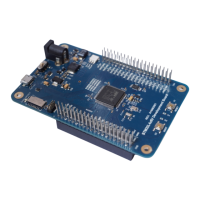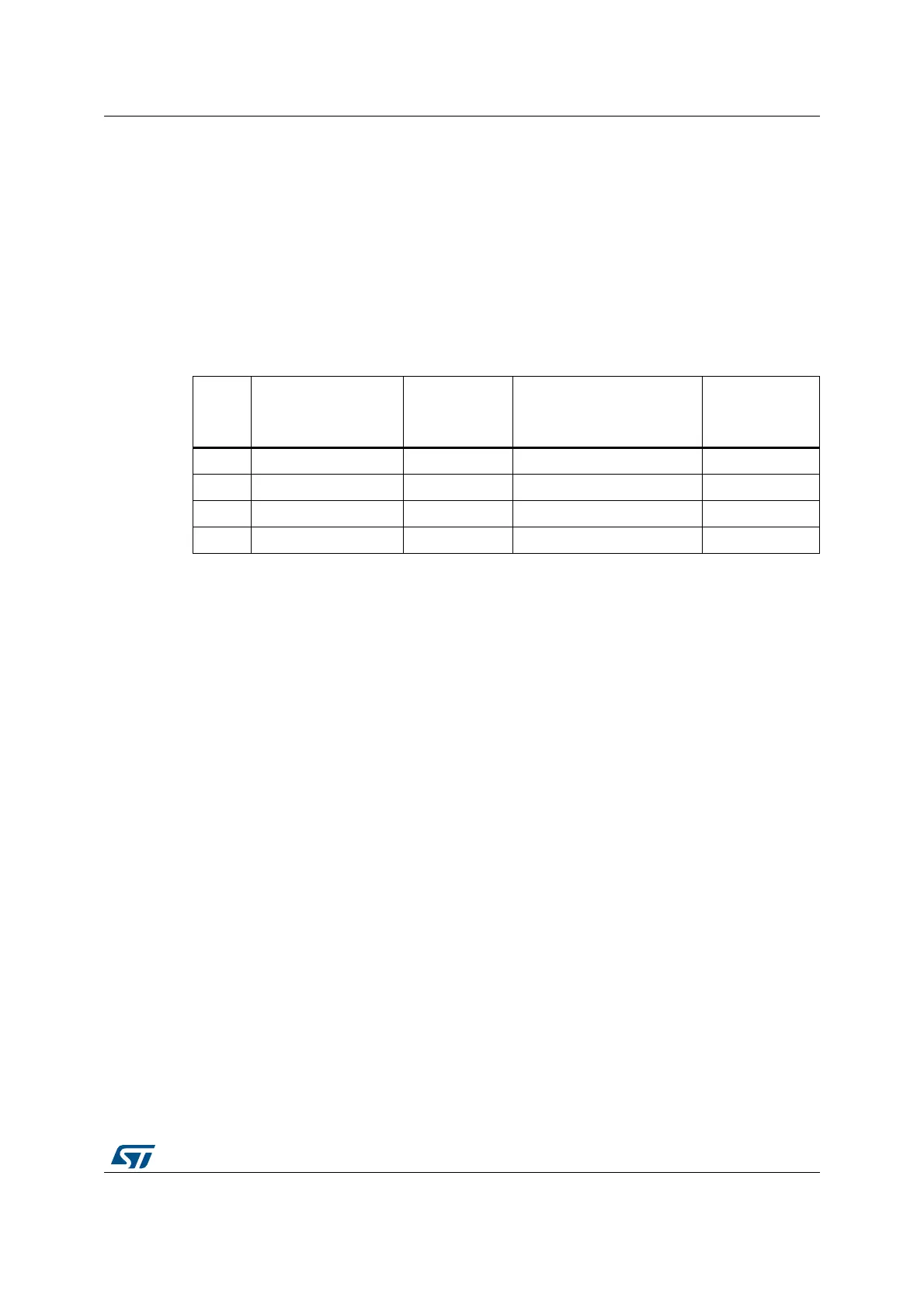DocID024597 Rev 3 461/1693
RM0351 Analog-to-digital converters (ADC)
540
16.3.22 Programmable resolution (RES) - fast conversion mode
It is possible to perform faster conversion by reducing the ADC resolution.
The resolution can be configured to be either 12, 10, 8, or 6 bits by programming the control
bits RES[1:0]. Figure 88, Figure 89, Figure 90 and Figure 91 show the conversion result
format with respect to the resolution as well as to the data alignment.
Lower resolution allows faster conversion time for applications where high-data precision is
not required. It reduces the conversion time spent by the successive approximation steps
according to Table 90.
16.3.23 End of conversion, end of sampling phase (EOC, JEOC, EOSMP)
The ADC notifies the application for each end of regular conversion (EOC) event and each
injected conversion (JEOC) event.
The ADC sets the EOC flag as soon as a new regular conversion data is available in the
ADCx_DR register. An interrupt can be generated if bit EOCIE is set. EOC flag is cleared by
the software either by writing 1 to it or by reading ADCx_DR.
The ADC sets the JEOC flag as soon as a new injected conversion data is available in one
of the ADCx_JDRy register. An interrupt can be generated if bit JEOCIE is set. JEOC flag is
cleared by the software either by writing 1 to it or by reading the corresponding ADCx_JDRy
register.
The ADC also notifies the end of Sampling phase by setting the status bit EOSMP (for
regular conversions only). EOSMP flag is cleared by software by writing 1 to it. An interrupt
can be generated if bit EOSMPIE is set.
16.3.24 End of conversion sequence (EOS, JEOS)
The ADC notifies the application for each end of regular sequence (EOS) and for each end
of injected sequence (JEOS) event.
The ADC sets the EOS flag as soon as the last data of the regular conversion sequence is
available in the ADCx_DR register. An interrupt can be generated if bit EOSIE is set. EOS
flag is cleared by the software either by writing 1 to it.
The ADC sets the JEOS flag as soon as the last data of the injected conversion sequence is
complete. An interrupt can be generated if bit JEOSIE is set. JEOS flag is cleared by the
software either by writing 1 to it.
Table 90. T
SAR
timings depending on resolution
RES
(bits)
T
SAR
(ADC clock cycles)
T
SAR
(ns) at
F
ADC
=80 MHz
T
CONV
(ADC clock cycles)
(with Sampling Time=
2.5 ADC clock cycles)
T
CONV
(ns) at
F
ADC
=80 MHz
12 12.5 ADC clock cycles 156.25 ns 15 ADC clock cycles 187.5 ns
10 10.5 ADC clock cycles 131.25 ns 13 ADC clock cycles 162.5 ns
8 8.5 ADC clock cycles 106.25 ns 11 ADC clock cycles 137.5 ns
6 6.5 ADC clock cycles 81.25 ns 9 ADC clock cycles 112.5 ns

